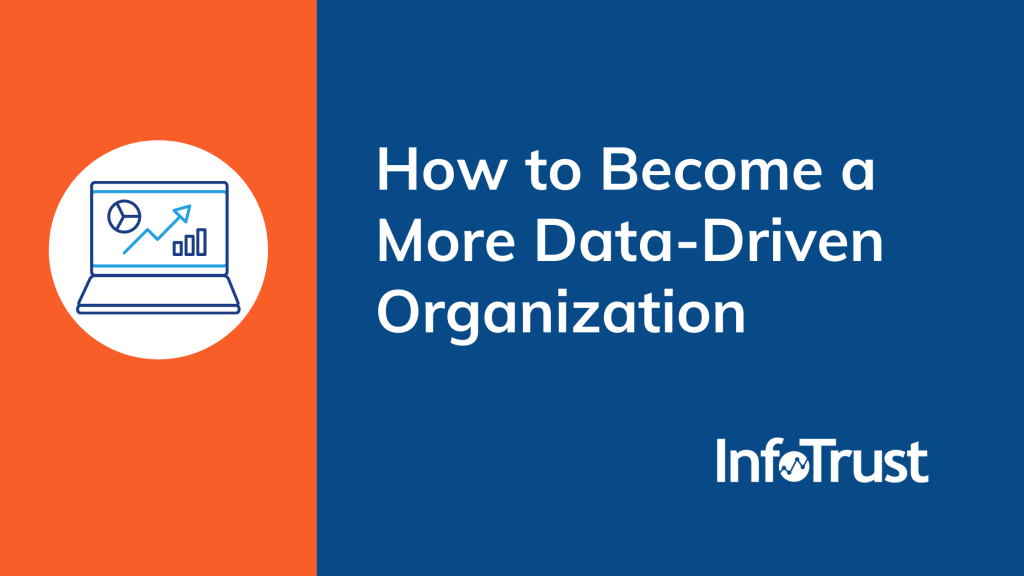In today’s ever-changing world, there is always room for some unbiased decision making so it’s no wonder that “data-driven decision making” is such a buzzword. However, this is something that takes a lot of planning and strategy. In this article, I hope to provide some key factors for driving your organization into becoming more data-driven.
Establish Universal KPIs
I know, I know … this is WAY easier said than actually done. In my experience, no matter what the size or scale of the organization, there can be big personalities and politics at play, but my mantra for these situations is “you have to start somewhere”. You should always be iterating your analytics setup to make sure you are keeping up with the times and continually optimizing your processes and reporting. However, once you have an idea of what you want to focus on company-wide (even on a very simple scale), this will help drive and focus the rest of your efforts through the organization.
These KPIs will vary depending on your industry and how your sites are set up. Also, these are meant to help guide you and provide you with more of site/user health, rather than markers of your efforts or where you fit within the industry as a whole.
- For sites with mostly articles/providing information, these could be Page Scroll, Pages/Session, Avg. Time on Page, and Unique PageViews.
- For sites with eCommerce, these could be Product Page Views, Add To Cart, Transactions, and Customer Lifetime Value.
The key is to think about what are your first indicators of key information you want to know. I usually start this with clients by filling out the framework below. I even provided an example:
| Company Objective | Objective Breakdown | KPIs | Segments | Implementation |
|---|---|---|---|---|
| Establish brand familiarity/ awareness | Increase awareness campaigns on social media | Impressions on social platform campaigns | Social media traffic | UTM parameters added to URLs |
| Establish brand familiarity/ awareness | Increase followers on social media | Followers on social media | Social media traffic | (Social media platform) |
| Establish brand familiarity/ awareness | Increase organic searches | Branded organic search traffic | - Organic traffic - Branded organic traffic | Verify search console for your site(s) |
Create a Training Schedule
I think this is pretty self explanatory, but I do think that it’s important to make sure that the users are aware of what data is available and how they can access it to make decisions.Training is one of my favorite things to do with clients because I get a chance to show them the power of this tool that I’ve usually been working with them for months to set up according to their particular business needs. Plus, I almost never leave a training session without being asked a question I haven’t thought about. Which then leads me to research and send a response back, and in a few cases, these people have turned out to be contacts that I still get questions from even years after I stopped working with them professionally.
If you are a larger organization, setting up a consistent training schedule is a fantastic way to stay on top of analytics changes and help inform new users as they are on-boarded and can help refresh some of the existing users’ knowledge about the platform. Even smaller organizations can have training or analytics office hours on a regular basis to help answer questions or specific problems that users are having (like pulling reports or creating dashboards). Plus, these training sessions can help you scope out new, interested users who can be your boots on the ground to help evangelize analytics and move your organization forward.
Establish a Consistent Reporting Process
This is another step of the process that has to start somewhere. By providing exposure to your analytics platform consistently, it really solidifies the data-driven mindset, allows users to get more comfortable with data, and provides them the power to come up with their own insights. Not all users are going to be analytics-minded, but those that get the bug will know it because those “aha” moments are exciting and they will quickly start asking more questions, as well as coming up with more reports and insights. Additionally, these insights can help tie the individual user’s impact to the bottom line which allows them to see more clearly how they can drive change and improvements.
To build the first dashboard, I start with key stakeholder interviews within the organization and identify what they are looking for in a reporting tool. Some of this may be possible, and some of it may have to be put off until you have a larger tool or database—but these stakeholder interviews can also give you an idea of where each of them are on their analytics journey and if they are familiar with different types of data.
In my experience, reporting starts off rather simple by having a basic site health dashboard with basic KPIs and informative charts—but can quickly turn into creating/requesting their own dashboards. You must decide how much you want to empower users: if you want to help them by creating a custom dashboard in something like Google Data Studio (free dashboarding tool that links to Google Analytics (GA)) or if you want to train users deeply on the platform itself (GA or Adobe) or if you want to user a specific dashboarding tool like Looker, PowerBI, or Tableau. It doesn’t really matter what the format is—you just have to start somewhere!
Avoid the “Scorecard Mentality” and Leave Room for the Numbers to Be “Bad”
Last, but certainly not least, is a vitally important and a very common pitfall for those new to the “data-driven” world to fall into. These KPIs are indicators of where you business is rather than a reflection of your team’s performance. It is incredibly common to create the consistent reporting that I mentioned but then just use it as a scorecard, meaning:
- All green numbers = GOOD
- ANY red number = BAD
Instead, try and treat any metrics that are “dropping” or “low” as learning opportunities. These are the questions I typically ask before immediately panicking about anything red on a dashboard:
- Is the comparison MoM or YoY? Is this a seasonal item?
- Looking at MoM and YoY, do you see the same traffic trend?
- Is/Was there news coverage of something related to your brand during this time?
- Were there any changes to marketing efforts?
- Did we start/stop a big campaign effort?
- Did we launch any new pages/events/initiatives last month/year that could possibly mess with the comparison?
- How big is the drop MoM or YoY?
- It does depend on the metric, but if it’s dropping by less than 10-20%, I usually attribute that to variation over time rather than a specific incident.
- It can help to create an average or target metric to help avoid panic.
- Was there an issue with the tracking during this period or last?
- I see this the most often when bounce rate increases. Then I look to see if the page has been updated to a site, if a tag was not added to a page, or if an event was added/removed.
These questions give me a much richer understanding and picture rather than just “red = bad”! The “bad” numbers provide a chance to learn something new to try to diagnose. It’s easy to start casting blame if you see those red numbers, but remember that there are unlimited factors to a site’s performance so there will always be variation. The key to data-driven decisions is to use the information you have to see if you can identify some of those factors to help inform you for the next month/year/quarter!
Conclusion
Like in site performance, there are many factors to becoming a data-driven organization, but hopefully this will help you get started on making waves within your own organization. It will take time, patience, and a lot of trial and error, but having hard numbers to plan out the next month/quarter/year for your business can help move your organization as a whole into the 21st century and provide you a competitive advantage. Take your time on the planning phases to make sure all users are on the same page, and once you have a set of KPIs, the rest should run smoother. And, if you need any help, you can always contact your friends at InfoTrust.










